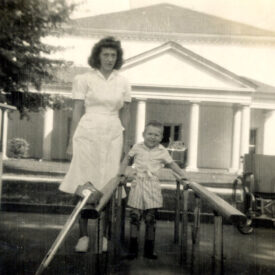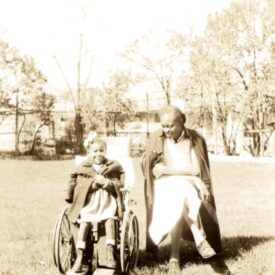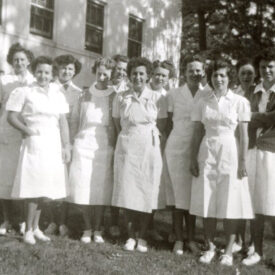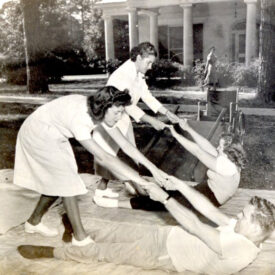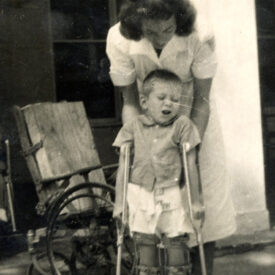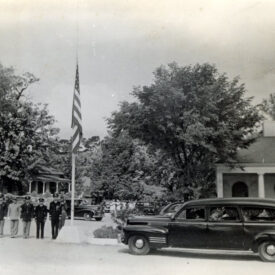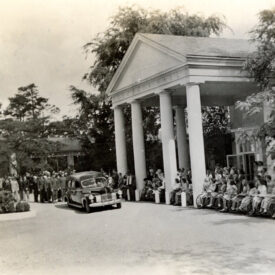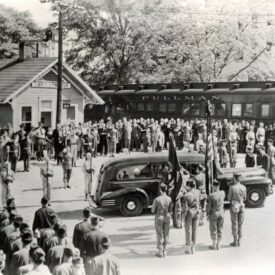Collection Highlight
Mariana Johnson Papers
The Georgia Historical Society recently accessioned and processed a collection of photographs taken by Mariana Johnson, who worked as a physical therapist with the Georgia Warm Springs Foundation in the 1940s and 1950s.
“For anyone interested in epidemic disease, presidential history, or mid-twentieth-century American life, Johnson’s photographs are a treasure,” said Nate Pedersen, GHS Manager of Archival and Reference Team. “Mariana Johnson’s photographs of Warm Springs provide rich insight into daily life for both patients and staff at the Foundation. While polio has largely been eradicated, the photographs demonstrate its devastating impact—particularly on children—in living memory. Her photographs tell a story of healing and hope.”
During Johnson’s time as a physical therapist, the US experienced the worst recorded polio outbreak in 1952. The first vaccination was licensed and disseminated in 1955, leading to a steep decline in cases in the U.S. An infectious disease of the nervous system, polio mostly affected children, causing paralysis, deformed limbs, lung damage, and more, and often resulted in lifelong consequences. Johnson and her colleagues provided therapeutic techniques and exercises for polio patients to relieve and strengthen muscles. Johnson’s photographs illustrate a variety of treatments, such as water aerobics sessions in the facility’s indoor pool and exercises with assisted stretches held outdoors. Johnson also worked with children, teaching them how to walk with crutches and braces.
“Furthermore,” Pedersen continued, “Johnson was present at an event with national significance: the death of President Franklin Delano Roosevelt at Warm Springs on April 12, 1945. Her photographs of the funerary procession are unique and have never been published.”
Roosevelt brought nationwide attention to Warm Springs, which was a town of less than 350 people during his first visit in 1924. Having contracted polio in 1921, Roosevelt found that the Meriwether County springs alleviated his symptoms. He was a frequent visitor for two decades, establishing the Georgia Warm Springs Foundation and building a residence now called the Little White House. After Roosevelt died, Johnson attended the local funerary procession. She likely felt the impact of his death and the significance of the event, considering her long-term employment with the foundation. Johnson took photographs as the coffin-enclosed president, escorted by his wife, Eleanor, left Warm Springs for the last time aboard a northbound train to Washington D.C.

